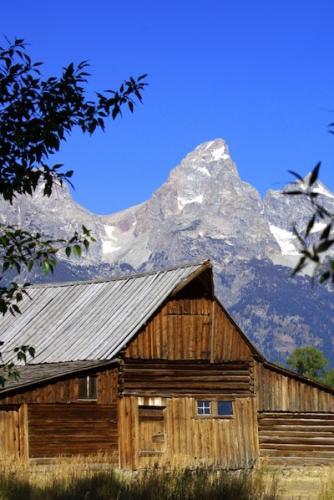As I was growing up in Chevy Chase, Maryland, the “kid’s corner” of our garage contained a shiny blue butterfly net, several empty Smuckers jars, and some plastic magnifying glasses pulled from children’s books on insects. The picture books on bugs, whales, birds, and other animals were stacked in the basement.
I didn’t realize at the time that my career interests were unfolding in front of me or that, while still a teenager, I would be in a position to advocate for America’s national parks. Those parks are in need of a new generation of supporters, and I am determined to help my generation step forward.
My first experience in national parks – other than Rock Creek Park, the National Mall, and others around the U.S. capital – was during family vacations. I vividly remember our trips to see the blue mountains of Grand Teton, the red rocks of Bryce, the postcard-worthy panorama of Yellowstone, and the breathtaking depth of the Grand Canyon. The natural phenomena of the parks stretched the limits of my already-busy childhood imagination and fueled my desire to see more.
On every park vacation I kept a record of all the wildlife we saw. I would draw each animal as best I could and then add a tally mark for every time I saw it. After the trip, I would read library books to learn about the bears, coyotes, and eagles that we had seen the previous week. When I fell in love with the national parks, I fell in love with nature.
Earlier this year – during my Spring Break at the University of Michigan – I had the chance to return to Grand Teton National Park in northwestern Wyoming. This time I was there not as a tourist but as a member of NPS Academy, a partnership between the National Park Service and the Student Conservation Association (SCA). SCA is the only national organization that develops future conservation leaders by providing college and high school students with service opportunities in all 50 states and the District of Columbia – from urban communities to national parks and forests. NPS Academy provides youth from diverse backgrounds with promising career paths by introducing college students to professional opportunities in the Park Service.
It was stunning to experience Grand Teton in the winter instead of the summer and with behind-the-scenes access to the park. I had remembered the park as hot and somewhat crowded; now it was cold and the wildlife outnumbered the people. I was tempted to pull out a sketch book and record the new sightings, but there wasn’t time.
I was too busy listening to the National Park Service experts and Interior Department officials, whose passion for the park, for all of our national parks, and for open public space more generally was obvious. I also had the opportunity to snowshoe for the first time – in three feet of crunchy snow in the otherwise silent eloquence of one of the most beautiful places on earth.
I returned to the University of Michigan, where I am pursuing a degree in the university’s Program in the Environment, more determined than ever to pursue a career in conservation and to be a vocal advocate for our nation’s parks. Those parks reflect the majesty of America. They provide the same inspiration today that motivated earlier advocates to preserve them, and they deserve our support and ongoing commitment.
The advocates who created our nation’s parks were both Democrats and Republicans. Yellowstone National Park was created during Ulysses Grant’s presidency. Theodore Roosevelt designated Devils Tower in Wyoming the first national monument in 1906. Woodrow Wilson created the National Park Service in 1916. At a time of political polarization nationally, perhaps our national parks can be a leading example of bipartisan commitment to the continued greatness of America.
This summer I will have the opportunity to continue my experience with NPS Academy and learn even more about the National Park Service, but I already know that there are many ways that we can support our national parks. We can visit them: simply showing up in the attendance figures demonstrates support. We can volunteer, as I’ll be doing this summer as an SCA national park intern. We can give whatever we can financially to organizations that augment the resources of individual parks, and we can provide financial support to national entities like SCA that introduce new generations to park conservation.
I’ll be filling those empty Smuckers jars in our Chevy Chase garage with coins and dollar bills to help support our national parks. I can’t wait to be snowshoeing in crunchy silence again.
Cristina Shoffner is a resident of Chevy Chase, Maryland, and a student at the University of Michigan.




Comments
Thank you for a great contribution for all of us to enjoy. You're a fine writer. Perhaps that's one of many skills you will be able to use in your advocacy. I'll be looking forward to reading more from you.